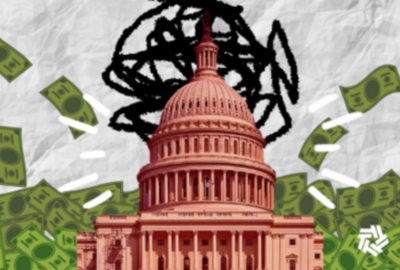
Congress, agencies dissect root causes of improper payments
Congress and agencies are still looking for answers as they grapple with a 14 percent increase in the governmentwide improper payment rate in 2014.
“You can’t manage what you can’t measure.”
That’s the message Sen. Tom Carper (D-Del.) left with the Finance Committee Oct. 1, as members discussed why the governmentwide improper payment rate jumped 14 percent over the last fiscal year.
The committee knows Medicaid, Medicare and the Earned Income Tax Credit programs accounted for 75 percent of the the Government Accountability Office’s estimate of improper payments for 2014. New data on improper payments for 2015 isn’t finalized since the fiscal year just ended Wednesday.
But a few years after Congress passed the Improper Payments Elimination and Recovery Improvement Act (IPERIA), there’s still too much lawmakers — and agencies themselves — don’t know about the $124.7 billion government paid in improper payments in 2014.
“I think we’re at the point where we need to take improper payments to the next level,” said Mike Wetklow, branch chief at the Office of Federal Financial Management within the Office of Management and Budget, at the Association of Government Accountants conference in September. “Compliance is really helpful. It got us to the point of where we’re at now where we know where we have problems. But we need to move the debate, the discussion around improper payments to things other than compliance if we want to make progress.”
Wetklow said OMB is working on a new reporting matrix for agencies, as an update to OMB Circular A-123.
“The intent there is to get more information about the problem,” he said. “It’s not more documentation or more requirements.”
He said that means dissecting or unbundling data to see what actually makes up the $125 billion in improper payments. Wetklow said OMB wants to figure out where the responsibility lies, whether with the federal government or state and local governments, universities or non-government organizations.
Budget, planning still a challenge for IRS
For the Internal Revenue Service, more information might help it tackle the tax gap, which topped $385 billion in 2014.
In some cases, IRS could better use the resources it already has to cut back on improper payments, said U.S. Comptroller General Gene Dodaro during his testimony before the Senate Finance Committee. But often, the agency doesn’t collect the right information to make those decisions.
Dodaro said putting more money toward IRS tax law enforcement would bring in more revenue. But the bigger question, he said, is which strategies the agency should use to improve its enforcement.
“They don’t have a good strategic plan to use online services, for example, to provide access to people 24/7 so they can research and get answers to their questions,” Dodaro said. “We illustrated that if they shifted a small amount of money in enforcement from exams to correspondence, they could get a billion dollars more in refunds.”
In 2012, GAO recommended IRS use return on investment data to reallocate its enforcement resources.
“IRS doesn’t collect enough information to be able to determine which enforcement efforts yield a better, higher rate of return on that investment,” Dodaro said. “They need better data to be able to do that.”
GAO said other suggestions, like changes in the tax code and more regulations on paid tax preparers, would take legislative fixes.
“There are things that Congress can do now to help IRS regulate the industry,” Wetklow said.
He said there are provisions in the law that stops agencies such as the IRS from taking action against improper payments, which is why Congress needs to help.
Some senators agreed Congress, which has cut the agency’s budget by $1.2 billion since 2010, doesn’t give IRS enough money to do its job.
“Congress should actually fund the IRS at levels that are consistent with what the administration asked for for 2016,” said Sen. Bob Casey (D-Pa.). “If you’re a member of Congress, you can’t lecture and then not support essential resources.”
What about the Pentagon?
Carper said one gaping hole in GAO’s breakdown of improper payments is at the Defense Department.
“I don’t think anywhere in this pie chart is the Department of Defense,” Carper said. “When you think about spending in the federal government and you think of a different pie chart, half of federal spending is entitlements, maybe another 5 to 10 percent is debt service. But the rest is discretionary spending, and more than half of discretionary spending is defense. Less than half of the remaining spending is non-defense. There’s not one dime’s worth of improper payments up here that’s cited by the Department of Defense. It’s crazy.”
DoD has long struggled with auditability, and it’s the only agency that hasn’t been able to achieve a clean, independent financial audit.
The department said in April it will miss its 2017 deadline to pass a clean audit. The Marine Corps, which had been the first of the Pentagon’s components to achieve auditability in fiscal 2012, had its opinion revoked earlier in March.
“A big part of our problem is not even recorded, and it needs to be,” Carper said.
Copyright © 2024 Federal News Network. All rights reserved. This website is not intended for users located within the European Economic Area.
Nicole Ogrysko is a reporter for Federal News Network focusing on the federal workforce and federal pay and benefits.
Follow @nogryskoWFED



